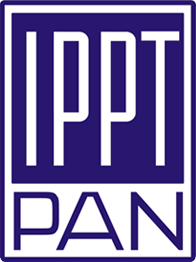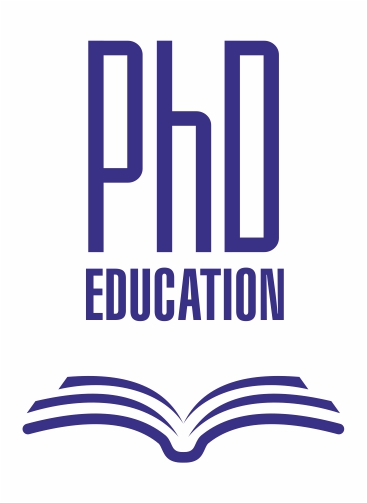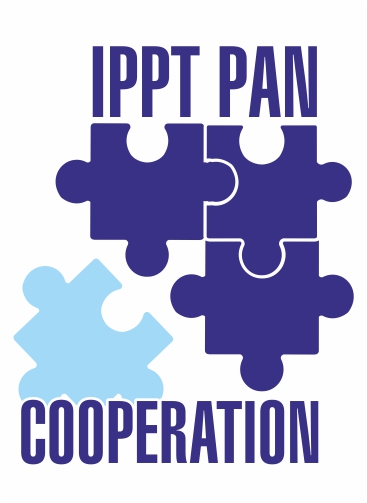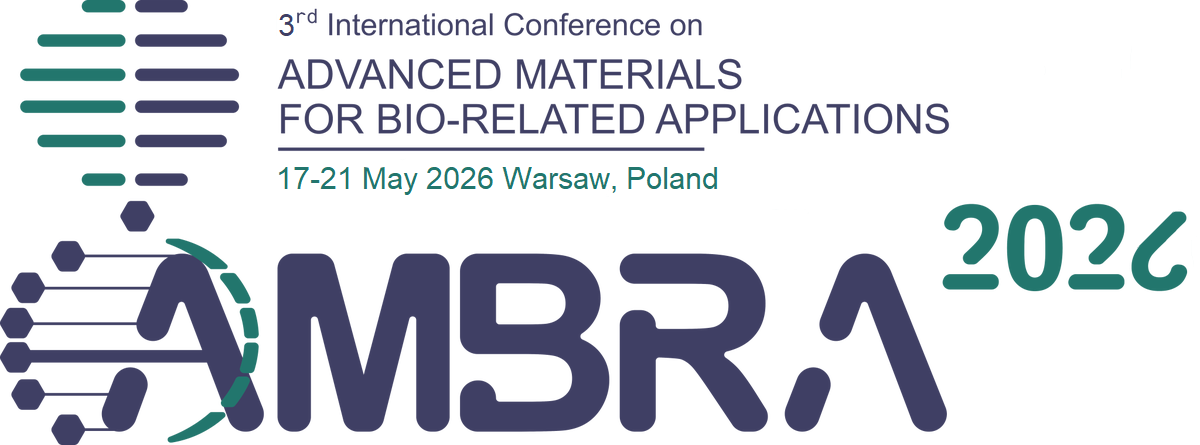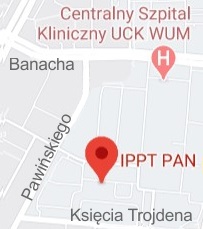| 1. |
Rzempołuch J.♦, Stasiak T.♦, Maździarz M., Jasiński J.♦, Woy U.♦, Psiuk R., Kowal M.♦, Kosińska A.♦, Wilczopolska M.♦, Mulewska K.♦, Barlak M.♦, Ciporska K.♦, Kurpaska Ł.♦, Jagielski J.♦, Mościcki T., Characterization of He+ implanted W-Zr-B thin films deposited by HiPIMS on additively manufactured Inconel 617 as a candidate system for nuclear components,
Journal of Nuclear Materials, ISSN: 0022-3115, DOI: 10.1016/j.jnucmat.2025.156091, Vol.616, No.156091, pp.1-12, 2025 Abstract:
Tungsten boride alloyed with zirconium is considered a very promising material in the nuclear industry due to its shielding properties. In this paper, the resistance to helium irradiation of W-Zr-B thin films deposited on additively manufactured Inconel 617 is investigated. Two laser Directed Energy Deposition methods, a laser powder (DED-LP) and laser wire (DED-LW) were utilized for Inconel 617 substrate preparation. Preliminary studies with density functional theory (DFT) calculations were performed to determine the stability and theoretical values of structural and mechanical properties of fabricated coatings. Additionally to structural and mechanical properties, an irradiation effects after ion implantation of the layers at room temperature and 400 °C with He+ ion dose of 5 × 10¹⁷ ions/cm² and energy of 60 keV were also studied. The results show that HiPIMS is a reliable process that allows depositing dense and uniform coatings with excellent mechanical properties, comparable with DFT calculations. Scratch test results confirmed good adhesion to the surface regardless of the substrate despite low critical forces values (5.4 N and 6.6 N Lc3 values). The thickness of the deposited coatings varied from 2.40 to 2.50 µm. Nevertheless, after helium ion implantation, TEM observation shows helium voids and bubbles form at the near-surface area of the coatings. A significant decrease in hardness from initial 21.12 GPa to 6.51 GPa (LW), 7.83 GPa (LP) after room temperature and 9.40 GPa (LW), 9.71 GPa (LP) after 400 °C ion implantation, respectively is observed. The mechanism underlying this effect is also discussed in the article. Keywords:
Tungsten borides, Hard thin films, High-power impulse magnetron sputtering, He+ ion implantation, Nanoindentation Affiliations:
| Rzempołuch J. | - | other affiliation | | Stasiak T. | - | other affiliation | | Maździarz M. | - | IPPT PAN | | Jasiński J. | - | other affiliation | | Woy U. | - | other affiliation | | Psiuk R. | - | IPPT PAN | | Kowal M. | - | other affiliation | | Kosińska A. | - | other affiliation | | Wilczopolska M. | - | other affiliation | | Mulewska K. | - | other affiliation | | Barlak M. | - | other affiliation | | Ciporska K. | - | other affiliation | | Kurpaska Ł. | - | National Centre for Nuclear Research (PL) | | Jagielski J. | - | other affiliation | | Mościcki T. | - | IPPT PAN |
| 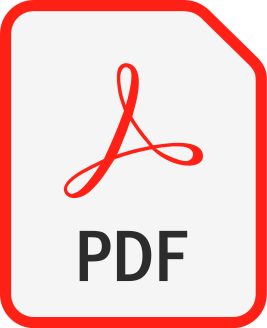 |
| 2. |
Psiuk R., Chrzanowska-Giżyńska J.♦, Denis P., Wyszkowska E.♦, Wiśniewska M.♦, Lipińska M.♦, Wojtiuk E.♦, Kurpaska Ł.♦, Smolik J.♦, Mościcki T. P., Microstructural and properties investigations of tantalum-doped tungsten diboride ceramic coatings via HiPIMS and RF magnetron sputtering,
ARCHIVES OF CIVIL AND MECHANICAL ENGINEERING, ISSN: 1644-9665, DOI: 10.1007/s43452-024-01050-0, Vol.24, No.239, pp.1-16, 2024 Abstract:
In this work, tantalum-doped tungsten boride ceramic coatings were deposited from a single sputtering target with the radio frequency (RF) and high-power impulse magnetron sputtering (HiPIMS) methods. Two-inch torus targets were synthesised from pure elements with the spark plasma sintering (SPS) method with a stoichiometric composition of W1-xTaxB2.5 (x = 0, 0.08, 0.16, 0.24). Films were deposited with RF and HiPIMS power suppliers at process temperatures from RT to 600 °C. The substrate heating and the energy of the ionised material impacting the substrate increase the surface diffusivity of adatoms and are crucial in the deposition process. The results of SEM and XRD investigations clearly show that the addition of tantalum also changes the microstructure of the deposited films. The coatings without tantalum possess a finer microstructure than those with 24% of tantalum. The structure of films is homogeneous along the film thickness and composed mainly of columns with a (0001) preferred orientation. Deposited coatings are composed mainly of P6/mmm α-WB2 structures. The analysis of nanoindentation results allowed us to determine that ceramic coatings obtained with the HiPIMS method possess hardness above 41 GPa and a ratio of hardness to reduced Young modulus above 0.1. The thickness of HiPIMS-deposited films is relatively small: only around 60% of the RF magnetron sputtered coatings even when the average power input was two times higher. However, it has been shown that the RF coatings require heating the substrate above 400 °C to obtain a crystalline structure, while the HiPIMS method allows for a reduction of the substrate temperature to 300 °C. Keywords:
RF magnetron sputtering, HiPIMS magnetron sputtering, Superhard ceramic coatings, Transition metal borides, Deposition temperature Affiliations:
| Psiuk R. | - | IPPT PAN | | Chrzanowska-Giżyńska J. | - | other affiliation | | Denis P. | - | IPPT PAN | | Wyszkowska E. | - | National Centre for Nuclear Research (PL) | | Wiśniewska M. | - | Łukasiewicz Research Network – Metal Forming Institute (PL) | | Lipińska M. | - | other affiliation | | Wojtiuk E. | - | other affiliation | | Kurpaska Ł. | - | National Centre for Nuclear Research (PL) | | Smolik J. | - | other affiliation | | Mościcki T. P. | - | IPPT PAN |
|  |
| 3. |
Mościcki T. P., Psiuk R., Jarząbek D. M., Ciemiorek-Bartkowska M.♦, Kulikowski K.♦, Jasiński J.♦, Włoczewski M.♦, Lewandowska-Szumieł M.♦, Effect of titanium and deposition parameters on microstructure and mechanical properties of W-Ti-B thin films deposited by High Power Impulse Magnetron Sputtering,
SURFACE AND COATINGS TECHNOLOGY, ISSN: 0257-8972, DOI: 10.1016/j.surfcoat.2024.130915, Vol.485, No.130915, pp.1-13, 2024 Abstract:
Tungsten diboride alloyed with transition metals provides an opportunity to obtain exceptional mechanical, physical, and chemical properties. We report a strategy for designing and synthesizing of superhard and low-compressible ceramic thin films with increased toughness and lowered residual stresses (σ < −0.9 GPa) deposited with high-power impulse magnetron sputtering (HiPIMS) from one target. The addition of 7–12 % titanium promotes additional strengthening mechanisms of the layers in one material, leading to the improvement of wear resistance compared to an alloyed WB2-z yet at even higher hardness 43.8 ± 2.1 GPa and nanoindentation toughness 4.9 ± 0.2 MPa√m. The compression of the micropillar shows that titanium addition changed the type of nanoindentation from cracking along the slip plane to bulging on the top of the pillar and next the crack initiation along column boundaries. The highest adhesion of the layers is obtained for addition of 7 % titanium and in all cases the wear has abrasive character. The controlled use of 200 μs pulses during synthesis with HiPIMS allows for an increase in the deposition rate and maintaining exceptional mechanical properties of the layers even at a substrate temperature of 300 °C. Keywords:
Ternary transition metal diboride thin films, Mechanical properties, HiPIMS magnetron sputtering, Wear resistance and adhesion Affiliations:
| Mościcki T. P. | - | IPPT PAN | | Psiuk R. | - | IPPT PAN | | Jarząbek D. M. | - | IPPT PAN | | Ciemiorek-Bartkowska M. | - | other affiliation | | Kulikowski K. | - | other affiliation | | Jasiński J. | - | other affiliation | | Włoczewski M. | - | other affiliation | | Lewandowska-Szumieł M. | - | other affiliation |
|  |
| 4. |
Psiuk R., Mościcki T., Chrzanowska-Giżyńska J., Kurpaska ♦, Radziejewska J.♦, Denis P., Garbiec D.♦, Chmielewski M.♦, Mechanical and Thermal Properties of W-Ta-B Coatings Deposited by High-Power Impulse Magnetron Sputtering (HiPIMS),
Materials, ISSN: 1996-1944, DOI: 10.3390/ma16020664, Vol.16, No.2, pp.1-12, 2023 Abstract:
We present the deposition and characterization of tungsten-tantalum diboride (W,Ta)B2 coatings prepared by the high-power impulse magnetron sputtering technique. We evaluated the influence of pulse duration and substrate bias on the properties of (W,Ta)B2 films. A high hardness of up to 35 GPa measured by nanoindentation was simultaneously obtained with good elastic properties. Changing the pulse duration greatly affected the B/(W+Ta) atomic ratio, which influenced the properties of the coatings. The deposited films are thermally stable at up to 1000 ◦C in vacuum and are able to withstand oxidation at 500 ◦C. Keywords:
tungsten diboride, high power impulse magnetron sputtering (HiPIMS), hardness, thermal stability, oxidation resistance Affiliations:
| Psiuk R. | - | IPPT PAN | | Mościcki T. | - | IPPT PAN | | Chrzanowska-Giżyńska J. | - | IPPT PAN | | Kurpaska | - | National Centre for Nuclear Research (PL) | | Radziejewska J. | - | other affiliation | | Denis P. | - | IPPT PAN | | Garbiec D. | - | Metal Forming Institute, Poznań (PL) | | Chmielewski M. | - | Institute of Electronic Materials Technology (PL) |
|  |
| 5. |
Maździarz M., Psiuk R., Krawczyńska A.♦, Lewandowska M.♦, Mościcki T., Effect of zirconium doping on the mechanical properties of W1−xZrxB2 on the basis of first‑principles calculations and magnetron sputtered films,
ARCHIVES OF CIVIL AND MECHANICAL ENGINEERING, ISSN: 1644-9665, DOI: 10.1007/s43452-022-00513-6, Vol.22, No.193, pp.1-30, 2022 Abstract:
Potentially superhard W1−xZrxB2 polymorphs, hP6-P63/mmc-WB2 and hP3-P6/mmm-WB2 , were thoroughly analyzed with zirconium doping in the range of x=0-25%, within the framework of the first-principles density functional theory, from both a structural and a mechanical point of view. The obtained results were subsequently compared with the properties of material deposited by the magnetron sputtering method. All predicted structures are mechanically and thermodynamically stable. Theoretical calculations suggest a decrease in hardness Hv and fracture toughness KIC of the hP6 phase with zirconium doping but no such effect on the hP3 phase. It was observed that an additional defect in the analyzed structure significantly weakens the hP6 phase but strengthens the hP3 phase. The deposited films are characterized by greater hardness but lower fracture toughness. The results of experiments show that not only is solid solution hardening responsible for strengthening the predicted new material but also the change in microstructure, the Hall–Petch effect and vacancies. Keywords:
Ab initio, Transition metal borides, Mechanical properties, Magnetron sputtered coatings, Hardness Affiliations:
| Maździarz M. | - | IPPT PAN | | Psiuk R. | - | IPPT PAN | | Krawczyńska A. | - | Warsaw University of Technology (PL) | | Lewandowska M. | - | other affiliation | | Mościcki T. | - | IPPT PAN |
|  |
| 6. |
Mościcki T., Chrzanowska-Giżyńska J., Psiuk R., Denis P., Mulewska K.♦, Kurpaska Ł.♦, Chmielewski M.♦, Wiśniewska M.♦, Garbiec D.♦, Thermal and mechanical properties of (W,Zr)B2-z coatings deposited by RF magnetron sputtering method,
International Journal of Refractory Metals and Hard Materials, ISSN: 0263-4368, DOI: 10.1016/j.ijrmhm.2022.105811, Vol.105, pp.105811-1-8, 2022 Abstract:
Magnetron sputtered WB2 coatings doped with 8, 11 and 16 at.% zirconium were analysed using energy dispersive spectroscopy, X-ray diffraction and nanoindentation under the load of 4, 7 and 10 mN. It has been observed that these coatings crystallize in the α-AlB2 and ω-W2B5 prototype structure. Phenomenon responsible for this is an increase of the zirconium content which causes an increase in the ω-W2B5 phase. All the deposited coatings have a hardness of about 45 GPa while Young's modulus drops down from 497 to 480 GPa with increasing zirconium content. Coatings without doping and doped with 16 at.% zirconium were annealed at 650 °C and subjected to cyclic thermal loads using a maximum temperature 600 °C and cooling with a compressed air. It has been observed that addition of zirconium improved coatings phase stability. Keywords:
superhard coatings, tungsten diboride, zirconia doping, magnetron sputtering, cycling thermal loads, annealing Affiliations:
| Mościcki T. | - | IPPT PAN | | Chrzanowska-Giżyńska J. | - | IPPT PAN | | Psiuk R. | - | IPPT PAN | | Denis P. | - | IPPT PAN | | Mulewska K. | - | National Centre for Nuclear Research (PL) | | Kurpaska Ł. | - | National Centre for Nuclear Research (PL) | | Chmielewski M. | - | Institute of Electronic Materials Technology (PL) | | Wiśniewska M. | - | Łukasiewicz Research Network – Metal Forming Institute (PL) | | Garbiec D. | - | Metal Forming Institute, Poznań (PL) |
|  |
| 7. |
Psiuk R., Milczarek M., Jenczyk P., Denis P., Jarząbek D., Bazarnik P.♦, Pisarek M.♦, Mościcki T., Improved mechanical properties of W-Zr-B coatings deposited by hybrid RF magnetron – PLD method,
APPLIED SURFACE SCIENCE, ISSN: 0169-4332, DOI: 10.1016/j.apsusc.2021.151239, Vol.570, pp.151239-1-11, 2021 Abstract:
In this work, novel W-Zr-B coatings were developed by a hybrid process combining pulsed laser deposited ZrB2 and radio frequency magnetron sputtered W2B5. The influence of the laser power density on the structure and mechanical properties of the deposited films was studied. Addition of zirconium causes a change in the structure of the deposited films from columnar to mainly amorphous. The nanoindentation tests and compression of nanopillars showed that doped W-Zr-B layers are still super-hard and incompressible in comparison to WB2 films without doping, but they change their behaviour from brittle to ductile. Films obtained with a fluence of 1.06 J/cm2 are superhard (H = 40 ± 4 GPa) and incompressible (12 ± 1 GPa), but possess a relatively low Young’s modulus (E = 330 ± 32 GPa) and a high elastic recovery (We = 0.9). Further increase in the fluence causes films to consist of deeply embedded fragments of laser ablated ZrB2 target in the deposited layer. Taking into account that the particles are made of ZrB2 which possess extraordinary thermal properties, and the matrix is made of W-Zr-B, a super-hard material, such a composite can also be interesting for industrial applications. Keywords:
superhard tungsten borides, hybrid magnetron sputtering – pulsed laser deposition, nanopillar compression Affiliations:
| Psiuk R. | - | IPPT PAN | | Milczarek M. | - | IPPT PAN | | Jenczyk P. | - | IPPT PAN | | Denis P. | - | IPPT PAN | | Jarząbek D. | - | IPPT PAN | | Bazarnik P. | - | Warsaw University of Technology (PL) | | Pisarek M. | - | Institute of Physical Chemistry, Polish Academy of Sciences (PL) | | Mościcki T. | - | IPPT PAN |
| 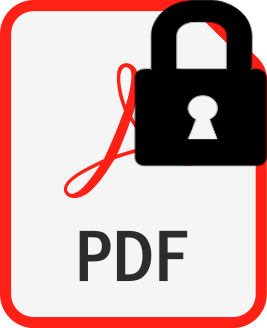 |
| 8. |
Garbiec D.♦, Wiśniewska M.♦, Psiuk R., Denis P., Levintant-Zayonts N., Leshchynsky V.♦, Rubach R.♦, Mościcki T., Zirconium alloyed tungsten borides synthesized by spark plasma sintering,
ARCHIVES OF CIVIL AND MECHANICAL ENGINEERING, ISSN: 1644-9665, DOI: 10.1007/s43452-021-00188-5, Vol.21, pp.37-1-15, 2021 Abstract:
Tungsten borides (WBx; x = 2.5 or 4.5) with an increasing substitution of tungsten by zirconium from 0 to 24 at.% were synthesized by spark plasma sintering (SPS) for the first time. The influence of the holding time (2.5–30 min) on the densification behavior, microstructure evolution and development of the properties of W–Zr–B compounds were studied. The samples were characterized using scanning electron microscopy (SEM) for microstructure analysis, X-ray diffraction (XRD) for phase identification, Vickers micro-indentation for microhardness measurements, tribological tests to determine the coefficient of friction and specific wear rate, as well as measurements of electrical conductivity. The XRD results confirm the presence of the WB4 phase in the microstructure, despite the high sintering temperature (1800 °C) and small overstoichiometric excess of boron (4.5) addition in the sintered samples. This is caused by the high heating rate (400 °C/min), short holding time (2.5 min) and addition of zirconium. The Vickers hardness (HV) values measured at 1 N are 24.8 ± 2.0 and 26.6 ± 1.8 GPa for 24 at.% zirconium in WB2.5 and for 0 at.% zirconium in WB4.5, respectively. In addition, the hardest sample (W0.76Zr0.24B2.5) showed electrical conductivity up to 3.961·10^6 S/m, which is similar to WC–Co cemented carbides. The friction and wear test results reveal the formation of a boron-based film which seems to play the role of a solid lubricant. Affiliations:
| Garbiec D. | - | Metal Forming Institute, Poznań (PL) | | Wiśniewska M. | - | Łukasiewicz Research Network – Metal Forming Institute (PL) | | Psiuk R. | - | IPPT PAN | | Denis P. | - | IPPT PAN | | Levintant-Zayonts N. | - | IPPT PAN | | Leshchynsky V. | - | other affiliation | | Rubach R. | - | other affiliation | | Mościcki T. | - | IPPT PAN |
|  |
| 9. |
Mościcki T., Psiuk R., Radziejewska J.♦, Wiśniewska M.♦, Garbiec D.♦, Properties of spark plasma sintered compacts and magnetron sputtered coatings made from Cr, Mo, Re and Zr alloyed tungsten diboride,
Coatings, ISSN: 2079-6412, DOI: 10.3390/coatings11111378, Vol.11, No.11, pp.1378-1-15, 2021 Abstract:
To enhance the properties of tungsten diboride, we have synthesized and characterized solid solutions of this material with chromium, molybdenum, rhenium and zirconium. The obtained materials were subsequently deposited as coatings. Various concentrations of these transition metal elements, ranging from 0.0 to 24.0 at.%, on a metals basis, were made. Spark plasma sintering was used to synthesize these refractory compounds from the pure elements. Elemental and phase purity of both samples (sintered compacts and coatings) were examined using energy dispersive X-ray spectroscopy and X-ray diffraction. Microindentation was utilized to measure the Vickers hardness. X-ray diffraction results indicate that the solubility limit is below 8 at.% for Mo, Re and Zr and below 16 at.% for Cr. Above this limit both diborides (W,TM)B2 are created. Addition of transition metals caused decrease of density and increase of hardness and electrical conductivity of sintered compacts. Deposited coatings W1−xTMxBy (TM = Cr, Mo, Re, Zr; x = 0.2; y = 1.7–2) are homogenous, smooth and hard. The maximal hardness was measured for W-Cr-B films and under the load of 10 g was 50.4 ± 4.7 GPa. Deposited films possess relatively high fracture toughness and for WB2 coatings alloyed with zirconium it is K1c = 2.11 MPa m^1/2. Keywords:
ternary tungsten boride, spark plasma sintering, magnetron sputtering, electrical conductivity Affiliations:
| Mościcki T. | - | IPPT PAN | | Psiuk R. | - | IPPT PAN | | Radziejewska J. | - | other affiliation | | Wiśniewska M. | - | Łukasiewicz Research Network – Metal Forming Institute (PL) | | Garbiec D. | - | Metal Forming Institute, Poznań (PL) |
|  |
| 10. |
Radziejewska J., Psiuk R., Mościcki T., Characterization and wear response of magnetron sputtered W–B and W–Ti–B coatings on WC–Co tools,
Coatings, ISSN: 2079-6412, DOI: 10.3390/coatings10121231, Vol.10, No.12, pp.1231-1-13, 2020 Abstract:
In this work, α-WB2 and (W,Ti)B2 borides were applied as wear-resistant coatings to commercial WC–Co cutting inserts. Properties of coatings deposited by magnetron sputtering on WC–Co tools were studied. The crystal structure and chemical composition were analyzed. Vickers hardness and surface roughness were determined and wear test in semi-dry conditions was performed. The W–B and W–Ti–B coatings deposited on WC–Co substrate were smooth and very hard. However, titanium alloy W-B films with Vickers hardness of 3630 ± 260 HV0.02 were characterized by lower adhesion to the substrate, influencing the wear mechanism. Turning tests carried out on 304 stainless steel showed that the W–B film caused less wear compared to uncoated insert. Moreover, when W–B coating was applied, flank wear was reduced by 30% compared to uncoated WC–Co insert. Additionally, coating prevented chipping of the edge during cutting under test conditions. The research shows that W–B film deposited by magnetron sputtering has great potential as a coating for cutting tools for difficult-to-cut materials. Keywords:
PVD coatings, wear resistance, transition metal borides, cutting tools Affiliations:
| Radziejewska J. | - | IPPT PAN | | Psiuk R. | - | IPPT PAN | | Mościcki T. | - | IPPT PAN |
|  |
| 11. |
Mościcki T., Psiuk R., Słomińska H., Levintant-Zayonts N., Garbiec D.♦, Pisarek M.♦, Bazarnik P.♦, Nosewicz S., Chrzanowska-Giżyńska J., Influence of overstoichiometric boron and titanium addition on the properties of RF magnetron sputtered tungsten borides,
SURFACE AND COATINGS TECHNOLOGY, ISSN: 0257-8972, DOI: 10.1016/j.surfcoat.2020.125689, Vol.390, pp.125689-1-12, 2020 Abstract:
In this work, (W,Ti)B2 films with different stoichiometric ratio Ti/W deposited on silicon and 304 stainless steel by radio frequency magnetron sputtering are presented. The coatings were deposited from plasma spark sintered targets obtained from the mixture of pure boron, tungsten and titanium powders. It is shown that during plasma spark sintering process using overstoichiometric boron and a low content of titanium change the WB2 to WB4 phase with almost no secondary phases. Subsequently, the impact of titanium content on the films properties is investigated systematically, including the chemical and phase composition, crystalline structure, surface and cross-section morphology. Simultaneously, nano-indentation test and ball-on-disk tribometery are performed to analyse the hardness and tribological properties of the films. It is shown that deposited films with titanium content of 3.6 and 5.5 at.% are formed in the zone T of the Thornton's Structural Zone Model. In opposite to α-WB2 magnetron sputtered coatings they are more flexible and hard nanocomposite coatings. The results show that the addition of titanium is apparently changing the film structure from nanocrystalline columnar to amorphous, very dense and compact structure with the addition of TiB2 phase. That films are simultaneously hard (H > 37.5 GPa), have high hardness to effective Young's modulus ratio values (H/E* > 0.1) and elastic recovery (We > 60%) appropriate for tough and resistant to cracking materials. The presented (W,Ti)B2 films exhibit also tribological and corrosion properties better than unalloyed coatings. Keywords:
superhard films, ternary tungsten borides, RF magnetron sputtering, wear resistance, corrosion Affiliations:
| Mościcki T. | - | IPPT PAN | | Psiuk R. | - | IPPT PAN | | Słomińska H. | - | IPPT PAN | | Levintant-Zayonts N. | - | IPPT PAN | | Garbiec D. | - | Metal Forming Institute, Poznań (PL) | | Pisarek M. | - | Institute of Physical Chemistry, Polish Academy of Sciences (PL) | | Bazarnik P. | - | Warsaw University of Technology (PL) | | Nosewicz S. | - | IPPT PAN | | Chrzanowska-Giżyńska J. | - | IPPT PAN |
|  |
| 12. |
Psiuk R., Słomińska H., Hoffman J., Mościcki T., Super-hard films W-B and W-Ti-B deposited from targets sintered by SPS method / Supertwarde warstwy W-B i W-Ti-B osadzane z tarcz spiekanych metodą SPS,
Metal Forming, ISSN: 0867-2628, Vol.30, No.2, pp.107-120, 2019 Abstract:
With increasing demand for high-performance and long-lasting cutting and forming tools, the members of this expanding class of superhard metals hold promise to address the shortcomings of traditional tool materials. Those shortcoming include their high cost (silicon nitride, cubic boron nitride, and diamond), their inability to cut ferrous metals due to chemical reactions (diamond), instability in the presence of humidity (cubic boron nitride) and relatively low hardness (tungsten carbide). Also the increasing industrial demand for protective coatings with high hardness, good elastic properties and thermal stability calls for the investigation of new material systems. Although transition metal (TM) nitrides are successfully applied for different tasks in automotive or aero-space industries, the search for improved materials is an ongoing topic, being far from its end. In this work the study on deposition of thin films made of new super-hard materials (SHM) such as tungsten boride are presented. Additionally, the influence of doping by titanium of those materials is investigated. Investigated films were deposited by the pulsed laser deposition method. The used targets were synthetized by SPS method. The powders of boron and tungsten in 4.5 to 1 molar faction were used. The films deposited by PLD method have stoichiometric composition such as used targets. The WB2 and WB3 phase are dominant. Research carried out using SEM, XRD and nanoindentation test showed that the phase composition of the targets is more important in the case of laser deposition than magnetron. All obtained layers are very hard and thermally stable. In the case of magnetron sputtering, smooth layers were obtained while the layers deposited by the laser have a very high roughness. Titanium doping increases the amount of WB3 phase in the sintered discs, while it has no significant effect on the properties of the deposited layers.
Z rosnącym zapotrzebowaniem na niezawodne, a jednocześnie zapewniające dużą wydajność, narzędzia do skrawania i obróbki plastycznej, coraz większego znaczenia nabiera rozszerzająca się grupa supertwardych ceramik przewodzących prąd. Materiały te dobrze rokują w związku z rozwiązaniem problemów tradycyjnych materiałów narzędziowych, których niedoskonałości obejmują wysoką cenę (azotek krzemu, azotek boru), niezdolność do cięcia stopów żelaza w wyniku reakcji chemicznych (diament), niestabilność w obecności wilgoci (azotek boru) i względnie małą twardość (węglik wolframu). Również rosnący popyt na powłoki ochronne o wysokiej twardości, o dobrych właściwościach sprężystych i stabilności termicznej powoduje, że badania nad nowymi systemami materiałowymi prowadzone są coraz intensywniej. Pomimo że azotki metali przejściowych są już z powodzeniem stosowane do różnych zadań w przemyśle samochodowym i lotniczym, poszukiwanie ulepszonych materiałów jest tematem wciąż aktualnym. W pracy przedstawiono badania nad osadzaniem cienkich powłok z nowych supertwardych materiałów (SHM), którymi są borki wolframu. Dodatkowo zbadano wpływ domieszkowania tych materiałów tytanem. Warstwy osadzane były metodą ablacji laserowej PLD. Tarcze do osadzania zsyntetyzowane zostały metodą spiekania plazmowego SPS proszków boru i wolframu o stosunku atomów 4,5 do 1. Osadzane z użyciem lasera warstwy mają skład stechiometryczny podobny do użytych tarcz. W warstwach tych dominuje faza WB3. Badania przeprowadzone z użyciem SEM, XRD i nanoindentacji wykazały, że skład fazowy tarcz jest odwzorowany w warstwach osadzonych laserem. Wszystkie uzyskane warstwy są bardzo twarde i stabilne termicznie. Warstwy osadzane laserem odznaczają się dużą chropowatością. Domieszkowanie tytanem zwiększa ilość fazy WB3 w spiekanych tarczach i osadzanych warstwach oraz zmniejsza ilość i wielkość naniesionych na powierzchnię cząstek. Keywords:
laser ablation, tungsten borides doped titanium, plasma sintering / ablacja laserowa, borki wolframu domieszkowane tytanem, spiekanie plazmowe Affiliations:
| Psiuk R. | - | IPPT PAN | | Słomińska H. | - | IPPT PAN | | Hoffman J. | - | IPPT PAN | | Mościcki T. | - | IPPT PAN |
|  |
















